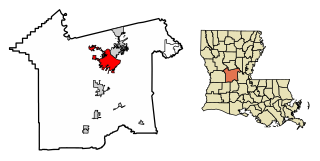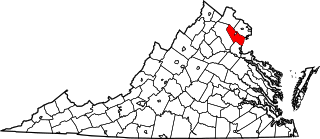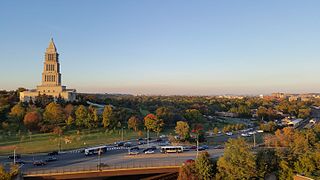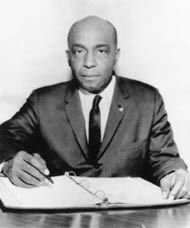Related Research Articles

Alexandria is the ninth-largest city in the state of Louisiana and is the parish seat of Rapides Parish, Louisiana, United States. It lies on the south bank of the Red River in almost the exact geographic center of the state. It is the principal city of the Alexandria metropolitan area which encompasses all of Rapides and Grant parishes. Its neighboring city is Pineville. In 2010, the population was 47,723, an increase of 3 percent from the 2000 census.

Arlington National Cemetery is one of two cemeteries in the United States National Cemetery System that are maintained by the United States Army. Nearly 400,000 people are buried in its 639 acres in Arlington, Virginia.

Prince William County is located on the Potomac River in the U.S. state of Virginia. As of the 2020 census, the population sits at 482,204, making it Virginia's second-most populous county. Its county seat is the independent city of Manassas.

Burke is an unincorporated section of Fairfax County, Virginia, United States, traditionally defined as the area served by the Burke post office. Burke includes two census-designated places: the Burke CDP, population 42,312 in 2020 and the Burke Centre CDP, population 17,518 in 2020.

Chantilly is a census-designated place (CDP) in western Fairfax County, Virginia. The population was 24,301 as of the 2020 census. Chantilly is named after an early-19th-century mansion and farm, which in turn took the name of an 18th-century plantation that was located in Westmoreland County, Virginia. The name "Chantilly" originated in France with the Château de Chantilly, about 28 miles north of Paris.

The history of Washington, D.C., is tied to its role as the capital of the United States. The site of the District of Columbia along the Potomac River was first selected by President George Washington. The city came under attack during the War of 1812 in an episode known as the Burning of Washington. Upon the government's return to the capital, it had to manage the reconstruction of numerous public buildings, including the White House and the United States Capitol. The McMillan Plan of 1901 helped restore and beautify the downtown core area, including establishing the National Mall, along with numerous monuments and museums.

Arlington House is the historic family residence of Robert E. Lee, commander of the Confederate Army, and a national memorial in his honor serving as a museum, located in Arlington County, Virginia. It is situated in the middle of Arlington National Cemetery, overlooking the Potomac River and the National Mall in Washington, D.C.

George Washington Parke Custis was an American plantation owner, antiquarian, author, and playwright. His father John Parke Custis was the stepson of George Washington. He and his sister Eleanor grew up at Mount Vernon and in the Washington presidential household.

The Northern Virginia trolleys were the network of electric passenger rails that moved people around the Northern Virginia suburbs of Washington, D.C., from 1892 to 1941. They consisted of as many as three separate companies connecting Rosslyn, Great Falls, Bluemont, Mount Vernon, Fairfax City, Camp Humphries and Nauck to Washington, D.C., on six different lines.

River Farm, permanent home to the American Horticultural Society (AHS) headquarters, is a landscape located at 7931 East Boulevard Drive, Alexandria, Virginia. The estate takes its name from a larger plot of land which formed an outlying part of George Washington's Mount Vernon estate.

The Old City Cemetery is a historic cemetery in Lynchburg, Virginia. It is the oldest municipal (city-owned) cemetery still in use today in the state of Virginia, and one of the oldest such burial grounds in the United States. Since the 1990s it has been operated as a history park and arboretum, in addition to being an active cemetery.

Alexandria Library is the public library in Alexandria, Virginia in the United States.

Alexandria is an independent city in the northern region of the Commonwealth of Virginia, United States. It lies on the western bank of the Potomac River approximately 7 miles (11 km) south of downtown Washington, D.C. Alexandria is the third-largest "principal city" of the Washington metropolitan area which is part of the larger Washington-Baltimore combined statistical area.

Samuel Wilbert Tucker was an American lawyer and a cooperating attorney with the National Association for the Advancement of Colored People (NAACP). His civil rights career began as he organized a 1939 sit-in at the then-segregated Alexandria, Virginia public library. A partner in the Richmond, Virginia, firm of Hill, Tucker and Marsh, Tucker argued and won several civil rights cases before the Supreme Court of the United States, including Green v. County School Board of New Kent County which, according to The Encyclopedia of Civil Rights In America, "did more to advance school integration than any other Supreme Court decision since Brown."
Alexandria, Virginia, an independent city in the Commonwealth of Virginia, is located along the western bank of the Potomac River. The city of approximately 151,000 is about six miles south of downtown Washington, D.C.
Nauck is a neighborhood in the southern part of Arlington County, Virginia, known locally as Green Valley. It is bordered by Four Mile Run and Shirlington to the south, Douglas Park to the west, I-395 to the east, and Columbia Heights and the Army-Navy Country Club to the north. The southeastern corner of the neighborhood borders the City of Alexandria.
Robert H. Robinson Library was one of the earliest libraries for Colored People in the United States, during the Jim Crow laws era. Robert Robinson Library was located at 902 Wythe St., Alexandria, Virginia, and was operated since 1940 by the City of Alexandria.
The Alexandria Library sit-in was one of the first staged sit-in actions in the United States, pioneering the use of nonviolent direct action to demand equal rights for African Americans. On August 21, 1939, five Black men sat down inside the Alexandria Public Library and quietly read books, a transgression of the library's "whites only" policy. Their actions were coordinated by Alexandria attorney Samuel Wilbert Tucker, who planned the action to create a test case challenging the library's racial segregation policy. The men were escorted out of the library by police and charged with disorderly conduct. A ruling was not filed in their court case; in October 2019, all charges against the men were dismissed. The Alexandria sit-in is one of the earliest precursors in the U.S. of the strategies used during the civil rights movement.
The African American Cultural Heritage Action Fund is a program formed in 2017 to aid stewards of Black cultural sites throughout the nation in preserving both physical landmarks, their material collections and associated narratives. It was organized under the auspices of the National Trust for Historic Preservation. The initiative which awards grants to select applicants and advocates of Black history has been led by architectural historian Brent Leggs since 2019. It is the largest program in America to preserve places associated with Black history.
References
- ↑ City of Alexandria, VA (2017). "Past Exhibitions at the Alexandria Black History Museum" . Retrieved February 14, 2018.
- ↑ Anderson, Adrian A.; Westover, Allan (1992). "THE AFRICAN AMERICAN HERITAGE PARK, ALEXANDRIA, VIRGINIA" (PDF). Tellus Consultants. Retrieved February 14, 2018.